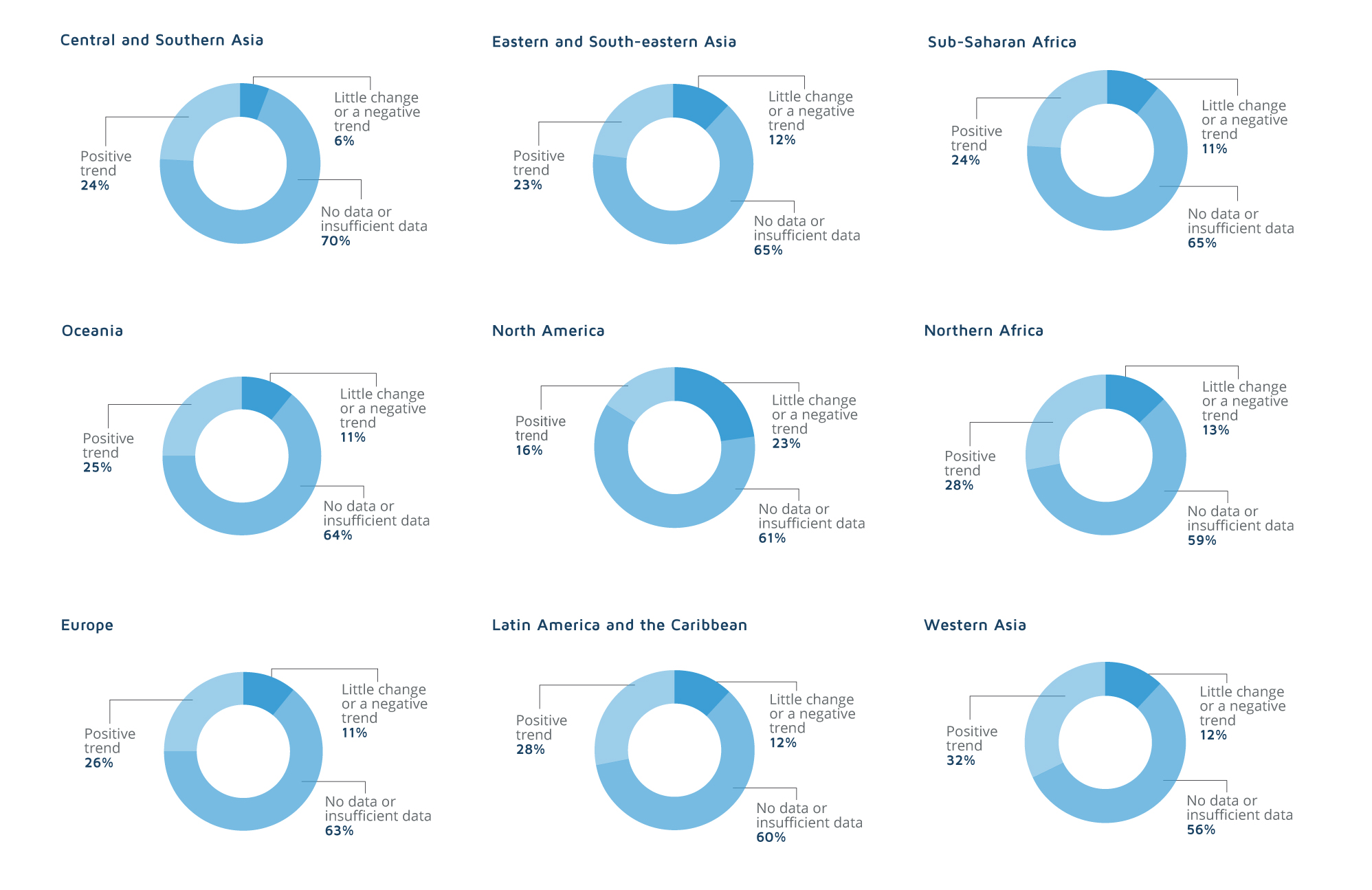Although humankind has made some progress towards enhancing environmental sustainability, the achievement of environment-related Sustainable Development Goals (SDGs) by 2030 is rather unlikely, a report by the UN Environment Program (UNEP) has revealed. Since practically all the SDGs have some environment component, therefore the failure to achieve these leads to problems with the fulfillment of all the SDGs as planned.
The report titled “Measuring Progress: Environment and the SDGs” indicates that although some progress has been achieved in sectors such as clean water, sanitation, clean energy, forest management, and waste, nevertheless biodiversity and climate change continue to deteriorate.
Elizabeth Maruma Mrema, Executive Secretary of the Convention on Biological Diversity, has noted that the world is not only falling short of achieving these SDGs, in some cases, it has gone backwards.
“The world cannot sustain our rate of use and abuse forever, and it is imperative that we accept the changes in lifestyles and livelihoods necessary to achieve the 2030 goals,” she urged.
According to the publication, freshwater pollution is still a matter of high concern especially in Latin America, Africa, and Asia. Deforestation has continued to expand as the total surface of forests decreased by 2.4% globally between 2000 and 2020. The largest deforestation rate was recorded in sub-Saharan Africa (10.4%) while the largest expansion of forests (6.2%) took place in Central and Southern Asia.
The report also mentions the red list index which indicates high levels of biodiversity loss, i.e., species extinction. The highest level of extinction risk was seen in Central and Southern Asia (down by 11%) between 2000 and 2020. Another environmental challenge according to the publication is air quality as only 16% of the population surveyed enjoys air quality that complies with the World Health Organization Air Quality Guidelines.
The report’s authors indicate that while some trends are positive and some are negative, most are interconnected and therefore impact upon one another.
“Actions taken in achieving one SDG target may impact other SDG targets. The interlinked nature of the SDGs means that achieving one goal or target may contribute to achieving other goals or targets, or the pursuit of one objective may conflict with the achievement of another,” the report read.
For a better understanding of the situation and to estimate the progress made, the report’s authors analyzed 92 environment-related indicators across 16 SDGs excluding SDG 16 (Peace, Justice, and Strong Institutions). However, the progress made on these indicators could not be measured in full as the authors could not access 42% of the data needed to check the 92 SDG indicators.
For sub-Saharan Africa, the report’s authors had insufficient data on 65% of the indicators but, according to information that was available, progress on over 47% of the indicators was reported in the region while 17% saw a decrease and in the case of 9% of the indicators the trend was either negative or the available data was insufficient for analysis.
The situation in other regions is presented in graphs below:

The 2030 Agenda for Sustainable Development that features 17 SDGs was adopted in September 2015. Back then, the world’s leaders stated that they were
“determined to protect the planet from degradation, including through sustainable consumption and production, sustainably managing its natural resources and taking urgent action on climate change, so that it can support the needs of the present and future generations.”
Six years on, little progress has been made to meet this commitment.

